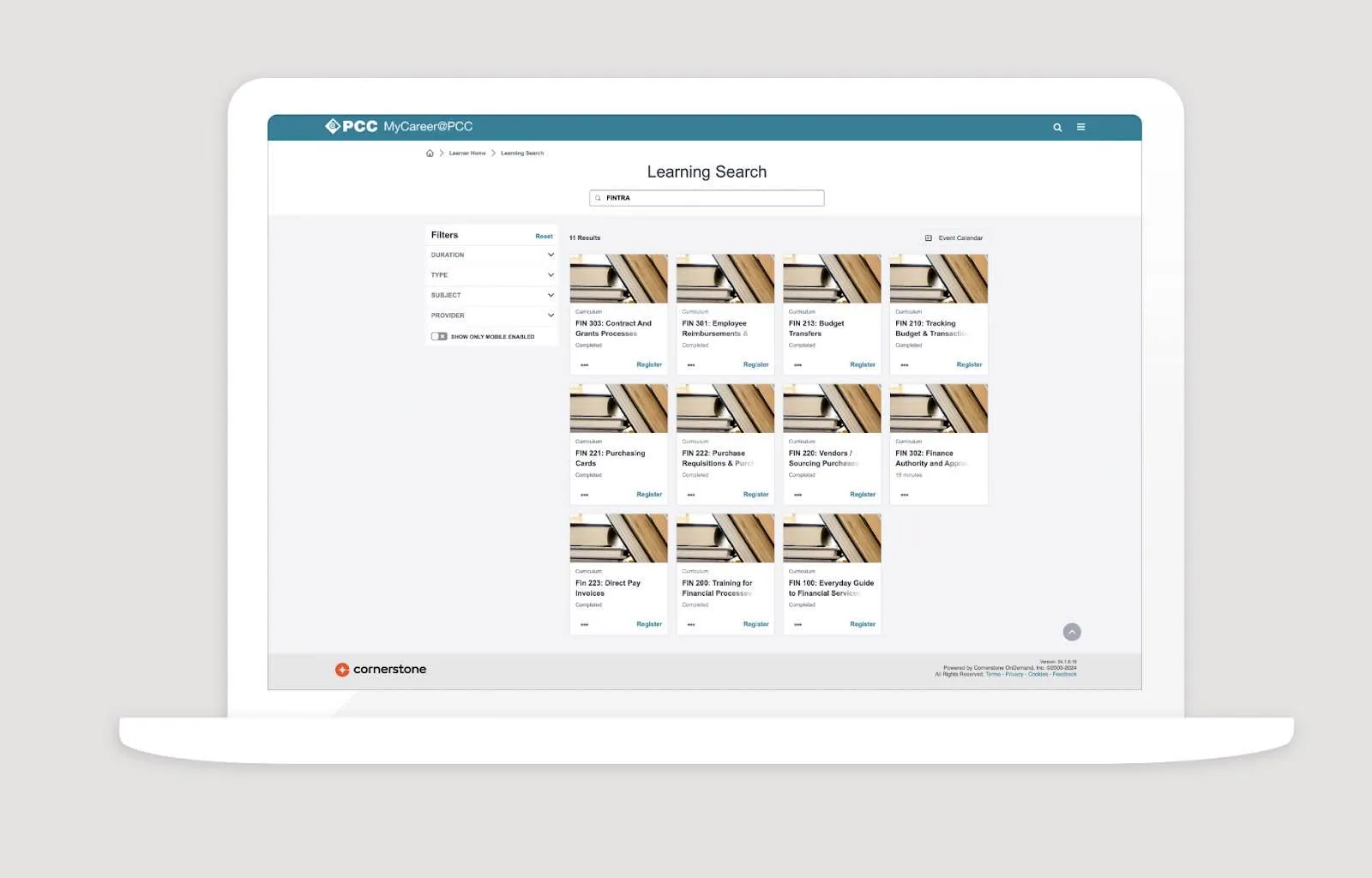Developing Curriculum
A project to create end-user-oriented documentation and adult learning curriculum to help educate employees about Financial processes. As project manager, content author, and curriculum designer on this project everything from initial analysis to project execution was executed over the course of an 18 month contract.

The Problem
The finance department had existing training in the loosest sense - there was training for Finance team staff, siloed to their respective departments and roles – but there was no cohesive information anywhere on the overarching processes between teams and how other PCC staff could complete financial processes correctly. Each department saw training for those users as not within their responsibility, and felt that only their aspects of an interdepartmental process were of priority.
This resulted in an existing hodgepodge of a “training site” that spanned four 1500+ word pages containing 285 hyperlinked pages of “suggested reading” between them. With no finish line in sight, there was no victory for those looking to complete their fiscal tasks appropriately. The results of failing to provide user guidance meant that many branches of the Finance department were bogged down in correcting paperwork, training on processes, and often provided information to users that conflicted with guidance from their neighboring departments.
The Project
Nobody had an answer for how the finance department worked. More specifically, nobody had the time to explain any of it. I had a mountain ahead of me. I would have to not only learn how PCC operated financially – I would have to identify who supported completing these financial processes, understand how these process interacted both inside and outside the Finance department, and understand the needs of the submitting users. I would be responsible for the project Discovery, Execution / Implementation, and all the milestones along the way with only the support of my direct manager.
After analysing the existing training and determining an appropriate path forward, I set about with one of the most important aspects of any project, creating materials that would support the people side of the change necessary to complete this project. The Finance Department and the project stakeholders had to be on the same page about why this work was important, and what our action plan was. My manager took and pitched these materials in applicable meetings.
The Product
As the pitch above shows, architecting a solution meant ensuring a cohesive training that would apply from part-time front desk workers to multi-departmental managers, in all the departments across PCC. The wide variety of needs for the user base meant that the curriculum design should not assume knowledge, and include essential context that non-managers often didn’t know, as well as managerial-only content that casual employees might never need to know. The Finance Departments internal disagreements on processes and responsibility meant that the curriculum should also be siloed into those departments, to ensure that content would be clearly matched to who must maintain and note when updated materials were needed going forward.
With a modular, tiered approach, users could take only the parts most applicable to their role, and bypass training that would be burdensome or repetitive if they were already an experienced employee.
Over 8 months I not only designed, authored and created all necessary curriculum, but I had also taught myself critical software and tools along the way to achieve it. This included a basic understanding of Banner (the school’s ERP), and Argos (a reporting API) which were essential to parsing the necessary training order. Build the curriculum itself required learning to use Camtasia to capture, record, and build interactive content, and support and manage that content in Cornerstone (a LMS).
The Post-Mortem
With the end of my contract approaching, the entire training had been written, created, and soft-launched. One last step was required though - formal approval from the overarching Finance team to launch and utilize the training. While this was arguably one of the most important steps, I was wholly removed from the ability to influence anyone involved in this work, outside my direct manager. Anticipating that review would go past my contract expiration, I created documentation and training for my manager on how to complete the final launch.
By the end of the year, I had moved into a new role at PCC (now as a systems analyst) and the training I created for this project remained in peer-review purgatory where disagreements from people teams prevented progress. Yet another reminder that successful projects require both technical execution and people management – and not even the greatest technical execution can overcome that without proper change management.